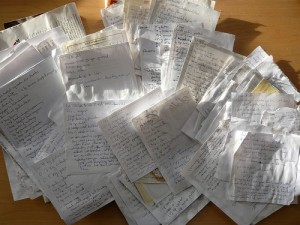Do you suffer from ‘Digital Photo Disorder’ where you have a backlog of photos on your computer with no organizational system in place but you keep snapping away?
It’s all too easy to take the pictures and decide that you’ll organize them another day. But unfortunately they’re not going to magically appear in neat, named folders on your computer without a bit of help.
Organizing digital photos should mean you have a fast, easy way to access your favorite memories. But if they are randomly scattered around your image library, with file names that are just numbers, it will be time consuming to locate the ones you want to enjoy and share.
But organizing these masses as part of your ‘how to organize your home‘ journey is not as easy as snap, snap, snap, delete, delete, delete – you’ll need a system. So commit to half an hour a week or a month depending on how many pictures you take and follow these simple steps for how to organize digital photos:
Keeping up to date with organizing your digital photos is the key.
Step 1 – Download
Download the pictures to your computer every time you take a new batch.
Step 2 – Decide what to toss
Delete the photos you don’t want to keep – be brutal. Get rid of those where your child’s eyes are closed or they’re making an awkward face. And toss those that are over exposed, too dark or duplicates – just pick your favorite and send the rest to the trash.
The only essential tool needed to organize digital photos is the delete button.
Step 3 – Photo editing
The beauty of digital photos is that you can do various forms of photo editing yourself – common things to improve are red eye and cropping any unwanted parts.
Step 4 – Rename each file
Come up with a consistent naming system and rename each file. This is the most time consuming part but is so much easier to do soon after taking the photo than it is years down the road.
Come up with a system that includes the following and stick to it: year, month, place, event (up to 3 words) or who is in the photo – use hyphens, eg, 2011-03-disney-land-family-trip
Step 5 – Create a folder structure
Create folders on your computer for each category of photo that you have, eg, date, vacations, kids, family, friends, work etc. These mimic physical photo albums. Allocate each photo to the relevant album.
When you have so many digital photos that folders are not enough, you may want to consider using tags. These are descriptive keywords or phrases that are added to an image file and make it easier for you to search for the photos that you want by creating a cross reference.
For more information on tagging and a comprehensive series of 10 tutorials of how to organize your digital photos click here.
As well as using a simple folder directory structure for keeping digital photos on your computer you could use photo organizer software. This will help you by allowing you to do both basic editing, photo management and photo sharing easily and automatically.
Picasa is free and thought to be the best photo organizing software – find out more here.
Step 6 – Backup your photos
To ensure your photos are safely preserved, you should backup your digital photo files either by burning them onto a CD or DVD, your iPod, an external storage device or using online photo storage.
Step 7 – Sharing and storing your digital photos online
As well as being a great back up for the digital photos held on your computer, those held online are so much easier to share with family and friends than printed versions. Whereas you could e-mail photos to each person, this can become tedious so using photo sharing websites is a much more popular alternative.
There are so many image hosts available these days you will be spoiled for choice whether you are looking for free or paid services. So check out their features to see which one suits you best. Things to look out for are:
- support of jpeg, gif and png file formats
- ability to browse your images
- storage space limits
- number of image limits (including number that can be uploaded at one time)
- file size limits (avoid anywhere where you will need to resize images to meet criteria)
- are thumbnails provided?
- ability to resize and rename images
- ability to print photos and order related personalized products
- ability to e-mail or otherwise share photos with family and friends
Most sites offer some form of free photo sharing, where you get say 1GB of storage space, and will then require an annual fee for more space and more features. These fees range from $19.95 to $40.00 per year for the top 10 photo sharing sites. The best site is Photobucket costing $24.95 per year which is easy to use and popular.
Source: TopTenReviews.com
I’d love to hear how YOU go about organizing digital photos. Please leave me a comment.
You might also be interested in:
 How To Organize Pictures: Overcome Your Roadblocks First
How To Organize Pictures: Overcome Your Roadblocks First
Before you worry about organizing pictures, you need to get started. Learn the top 5 roadblocks we all face and how to overcome them.
 How To Organize Photos Without Losing Your Mind
How To Organize Photos Without Losing Your Mind
Get some advice on the best way to organize photos. It will be simple with our 7 step guide. Start now – your photo chaos is only getting worse.
 Using An Online Recipe Organizer Or Organizing Recipes On Your Computer
Using An Online Recipe Organizer Or Organizing Recipes On Your Computer
Need an easy-to-use online recipe organizer? Check out our suggestions and what to look for. Also ideas for organizing recipes without software.





